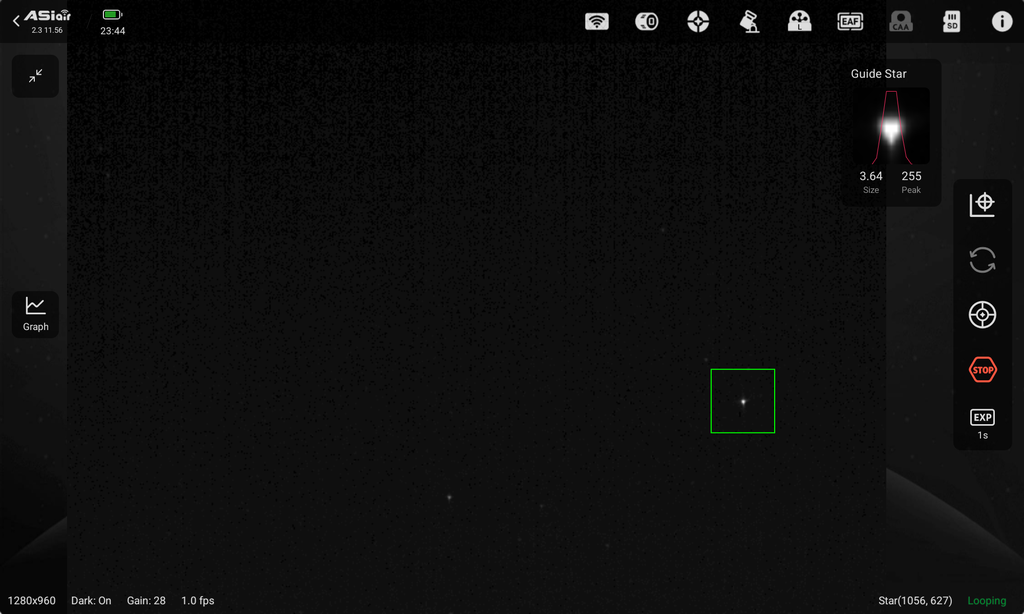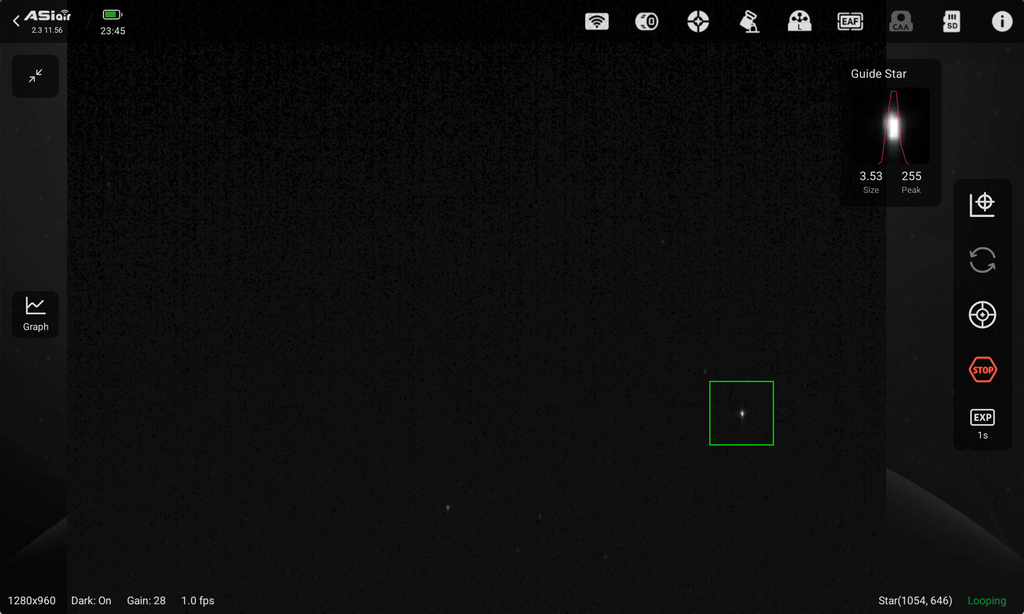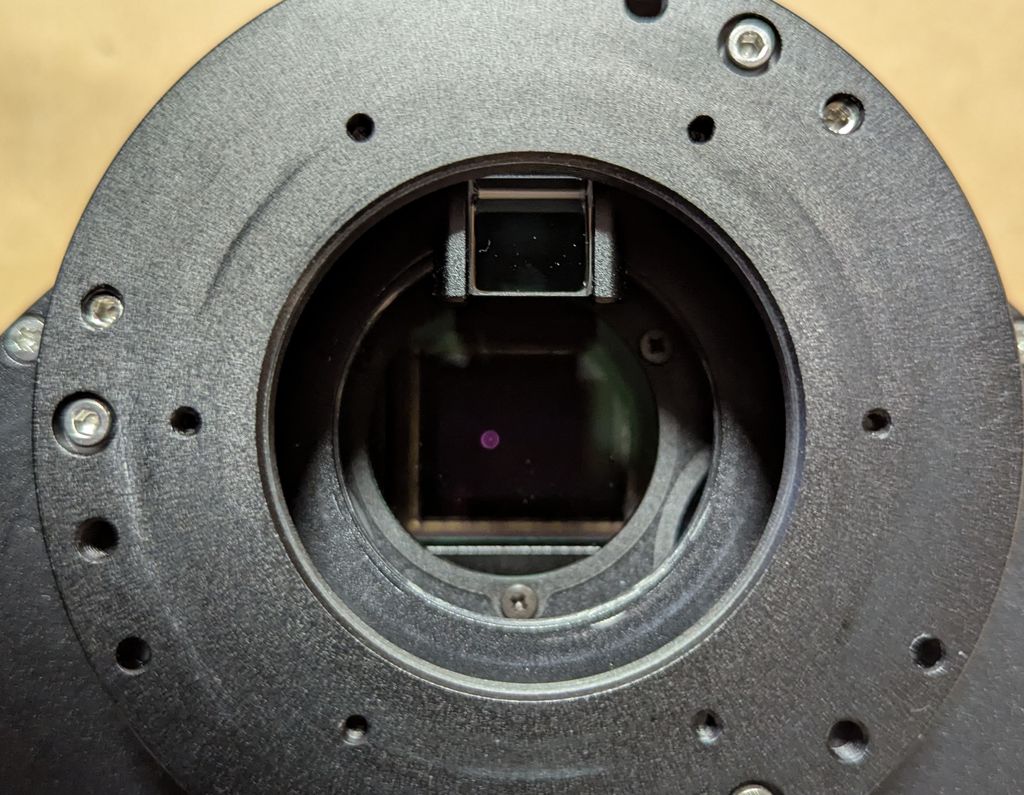The main camera is an ASI2600MM, and the guide camera is a ZWO ASI120MM Mini.
About 9 months ago, I switched from a 30F4 guide scope to off-axis guiding (OAG-L).
When trying to get the guide scope in focus, I noticed that the star shapes were odd: either blurred and elongated or less blurred and triangular (depending on focus position).
I don't see such shapes in the frames captured by the main camera, and these weird shapes are present independently of the refractor used.
Initially, I did not care much about it and hoped it wouldn't matter anyway.
However, since I switched to the OAG-L, I see a significantly worse guiding error.
Before, I achieved an RMS error of 0,8" or below under excellent conditions or about 1" during an average night.
After switching to the OAG-L, I'm not even getting close to 1.2" anymore.
I suspect this comes from an issue of detecting the center of the guide star when it has such a weird shape.
Below is a screenshot of the triangular guide star as seen by the guide cam:

Here is the elongated form of the guide star:

Any idea what could cause these shapes and how to address this?
Also, do others observe such star shapes with their OAG-L?
Thanks in advance!



